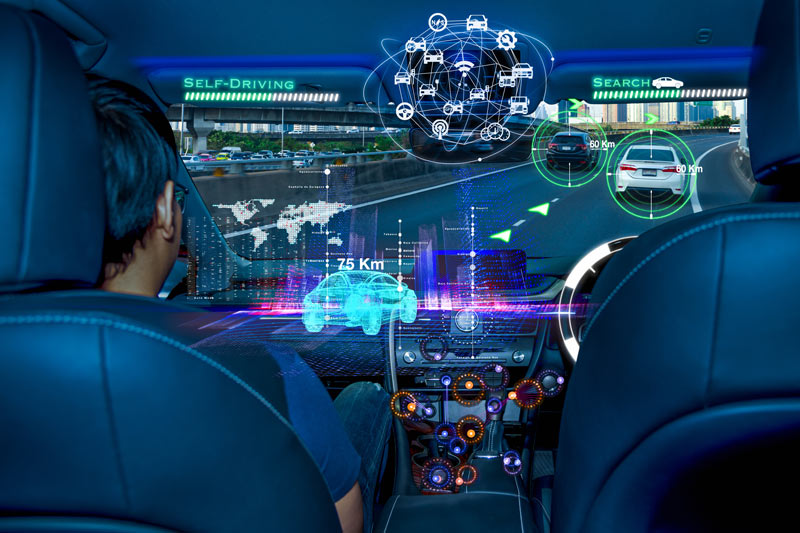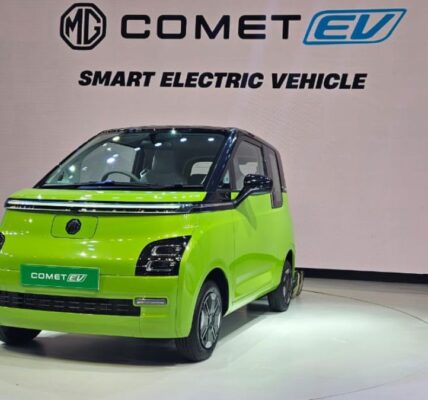Automotive Electronics Market Revenue and Trends 2025 to 2033
The global automotive electronics market revenue reached USD 307.61 billion in 2025 and is predicted to attain around USD 596.05 billion by 2033 with a CAGR of 8.62%. The automotive electronics industry is driven by the growing demand for electric technology and smart innovations that improve performance, safety, and consumer satisfaction.
Market Overview
The automotive electronics is focused on developing and supplying electronic systems for vehicles. Modern automobiles utilize electronic systems to meet diverse functionalities including safety control, vehicle operation, wireless communication, entertainment features, and networking capabilities. The purpose of electronically designed systems is to boost automobile performance, efficiency, comfort, and improve user experience.
The automotive electronics market expanded rapidly in recent years because vehicles need safety components with advanced driver assistance systems and connectivity capabilities. The market contains various components including powertrain electronics, infotainment systems, advanced sensors, control units, and telematics systems. The increase in electric vehicle demand strongly affects the market for automotive electronics. Government funding and regulations drive market growth in this sector.
Report Highlights
By component, the current-carrying devices segment dominated the market share in 2024. The automotive industry depends heavily on such components to transport electrical power and signals throughout their electrical system networks. The sensors segment is projected to grow at a notable CAGR during the forecast period. The automotive sector implements sensors for multiple uses such as engine management, safety, and entertainment systems.
By application, the safety systems segment accounted for the highest market share in 2024. Road safety standards and a growing number of vehicle accidents drive the increasing demand for safety systems. The Advanced driver assistance systems (ADAS) segments experience signifiçant growth throughout the timeframe. The demand for ADAS technologies in vehicles increases because safety has become a primary focus among vehicle stakeholders.
By sales channel, the OEM segment achieved the highest market share in 2024. OEMs keep developing electronic technologies for vehicles through continuous innovation, resulting in component demands which improve safety and performance with enhanced user experiences. The aftermarket segment is projected to grow at a notable CAGR over the forecast period. The expansion will continue due to enhanced aftermarket product offerings and increasing customer preference for high-end functionalities.
Automotive electronics market Trends
Increasing Demand for Electric Vehicles
The electric vehicle revolution plays a primary role in transforming the automotive industry. The evolving consumer trend comprises electric vehicle uptake and the corresponding electronic equipment. Electric vehicles continue to gain a growing global market because consumers want clean energy options, adaptation of improved battery systems, and regulatory sustainability initiatives. The International Energy Agency (IEA) shows that the Global EV Outlook 2024 indicates electric vehicles sold 14 million units in 2023 while showing a 35% increase from 2022.
Rising Interest in Cutting-Edge Car Features
The automotive electronics market continues steady growth because consumers purchase vehicles which integrate advanced technologies for electric drivetrains, autonomous driving platforms, and better infotainment systems. Sophisticated electronic components demand manufacturing companies to integrate advanced technology into their car production.
Increasing Interest in Autonomous Driving Technologies
Vehicle manufacturers have achieved remarkable advancement in adding sensors and cameras with radar and LiDAR systems into their vehicles. The advancement necessitates physical electronics that process large data amounts at real-time speeds.
Utilization of Connected Vehicle Technologies
Connected vehicles can access external networks through real-time communication so they can provide better mapping solutions, conduct remote diagnosis, and deploy updated software options. The market shows increased demand for vehicle electronics along with communication systems because customers want greater comfort and safety features during driving.
Regional Insights
Asia Pacific accounted for the largest share in automotive electronics market 2024. The Asia Pacific region presents its largest automotive markets across South Korea, India, China, and Japan. The automotive industry in these countries experiences strong growth due to increasing consumer incomes, urbanization, and improved infrastructure, which leads to higher automotive electronic demand.
Tata Motors introduced the 2023 Tata Harrier SUV in India during February 2023 with an Advanced Driver Assistance System providing 10 safety and driver-assist features. Auto manufacturers seek higher production efficiency through modern manufacturing technology implementations.
North America is anticipated to be the fastest-growing region in the automotive electronics market. The growth is supported by government regulations which promote safe and efficient vehicles. Automakers experience a rising market demand from North American consumers to adopt automotive technology features. Visteon announced in January 2023 a technology collaborative agreement with Qualcomm to create a high-performance cockpit domain controller as their U.S.-based automotive electronics supplier. Automakers will receive support for constructing digital cockpit solutions through this project.
The automotive industry in the U.S. experiences a transformation shift toward connected vehicles because these vehicles include internet connectivity and communication functionality with smartphones, other vehicles, and infrastructure. The demand for connected cars becomes a key driver for automotive electronics advancement since these vehicles demand innovative electronic systems to establish their connectivity.
Market News
In January 2025, JLR (Jaguar Land Rover) partnered with Tata Communications to build an upgraded connected vehicle ecosystem through the Tata Communications Move platform. The collaboration strengthens their next-generation software-defined vehicles (SDVs) by maintaining uninterrupted connectivity for service access throughout 120 countries in remote locations.
In November 2024, Marelli introduced its Artificial Intelligence-based Electronic Control Unit (ECU) which serves motorsport and vehicle control applications of engines. The VEC_480 system operates with all types of vehicle propulsion systems allowing compatibility for classic vehicles and electric-powered automobiles.







